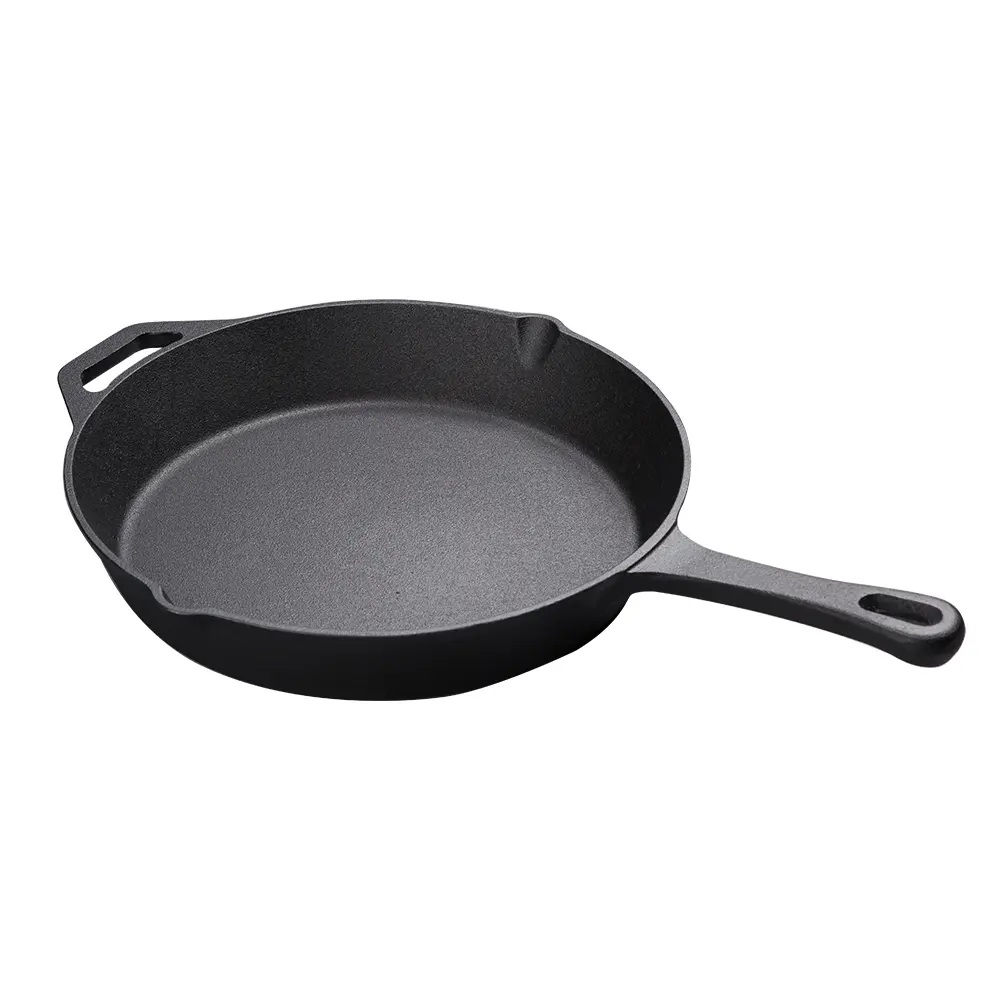frying pan
The frying pan, a quintessential kitchen tool, has transcended its functional roots to become a symbol of culinary craftsmanship. Known for its versatility, it is indispensable for both amateur cooks and professional chefs. From sautéing vegetables to searing steaks, a frying pan can transform simple ingredients into gastronomic wonders. But in a marketplace flooded with options, how does one choose the frying pan that meets both aesthetic desires and practical needs?

When selecting a frying pan, the material is paramount. Cast iron is often a favorite among culinary enthusiasts due to its excellent heat retention and natural non-stick properties when seasoned properly. Its ability to achieve a perfect crust on meats is unmatched, making it ideal for those who take their cooking seriously. However, its weight and maintenance can be a deterrent for some. In contrast, stainless steel frying pans offer unmatched durability and are perfect for tasks requiring quick temperature changes, such as deglazing and creating pan sauces. Unlike cast iron, they can transition from stovetop to oven without blinking an eye.
Non-stick frying pans are celebrated for their convenience. Coated with materials like Teflon or ceramic, they ensure easy food release and require less oil, promoting healthier cooking methods. However, their lifespan can be shorter, especially if subjected to high temperatures or metal utensils. The eco-conscious may gravitate towards ceramic coated pans, which are free from PTFE and PFOA, chemicals associated with traditional non-stick coatings, offering peace of mind alongside their functional benefits.

Size and shape are also critical considerations. A pan’s diameter affects its utility; a larger pan offers more cooking space for family meals, while a smaller pan might be better suited for single servings or specific recipes. The shape and angle of the sides can influence how foods cook, with sloped sides being optimal for tossing vegetables and maintaining even heat distribution.
frying pan
Handle ergonomics deserve attention as well. A comfortable, heat-resistant handle can make a world of difference, particularly during extended cooking sessions. Look for handles that stay cool or are engineered to provide a solid grip, minimizing the risk of spills and burns. Riveted handles add durability, though they can complicate cleaning; welded or screwed-on handles present a seamless surface but may sacrifice long-term steadfastness.
The importance of brand reputation cannot be overstated. Established brands often provide quality assurance backed by years of expertise and innovation. Companies like All-Clad, Le Creuset, and Lodge have cultivated trust by consistently delivering reliable products. Reading reviews and seeking recommendations within cooking communities can provide invaluable insights into long-term performance and value for money.
Caring for your frying pan extends its life and ensures optimal performance. Proper maintenance includes regular cleaning according to the material’s needs and being mindful of temperature limits, especially with non-stick coatings. Storing your pan correctly, for instance by hanging it, can prevent scratches and warping, maintaining its pristine condition.
In summary, the ideal frying pan blends material quality, size, design, and brand trustworthiness, creating a tool that meets both your culinary demands and personal cooking style. Whether you’re flipping pancakes on a weekend morning or executing a gourmet dinner, the right frying pan is an investment in culinary adventure and success. This kitchen staple’s rich history and enduring presence in homes worldwide underscore its significance not only as a tool but as a partner in the art of cooking. Choose wisely to transform everyday meals into extraordinary experiences.
-
Why Every Home Cook Needs a Cast Iron Meat PressNewsNov.12,2024
-
Unlock Perfectly Seared Steaks with the Cast Iron Meat PressNewsNov.12,2024
-
Master the Art of Cooking Thick Cuts of Meat with a Cast Iron Meat PressNewsNov.12,2024
-
How to Care for Your Cast Iron Meat Press: Tips for Longevity and PerformanceNewsNov.12,2024
-
How a Cast Iron Meat Press Enhances the Flavor and Texture of Your BurgersNewsNov.12,2024
-
Roasting Pan for Perfect MealsNewsNov.04,2024
-
Perfect Skillet for SaleNewsNov.04,2024
